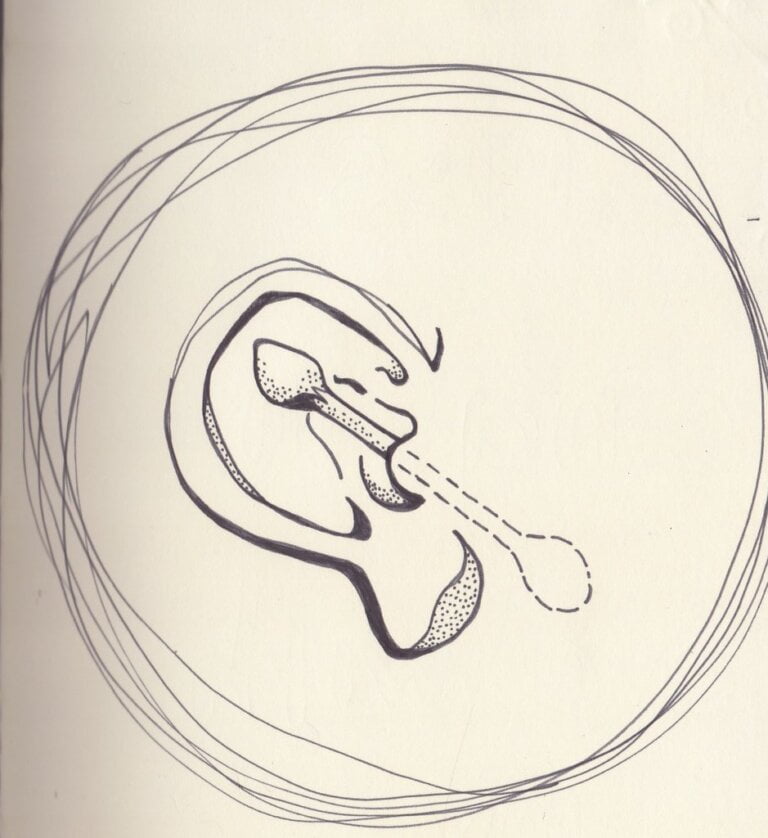Ears Under Attack: Understanding and Identifying the Signs of Ear Infections
Last Updated on 3rd May 2024 by Admin
Ear infections are a prevalent health issue that can affect individuals of all ages, ranging from infants to adults. These infections can cause pain, discomfort, and even hearing loss if left untreated. Therefore, it is crucial to comprehend the signs and symptoms of ear infections for early detection and prompt treatment. In this article, we will delve into the topic of ear infections, exploring their causes, symptoms, and treatment options.
What are Ear Infections?
Ear infections, medically known as otitis media, occur when the middle ear becomes inflamed and infected. The middle ear, situated behind the eardrum, plays a vital role in transmitting sound vibrations to the inner ear. Ear infections can be caused by bacteria or viruses and can affect one or both ears.
Common Causes of Ear Infections
Several factors contribute to the development of ear infections. Understanding these causes is essential for preventing and effectively managing this condition. Let’s explore some common causes of ear infections in detail:
- Upper Respiratory Infections: Cold, flu, or other respiratory infections can lead to ear infections. Bacteria or viruses from these infections can spread to the middle ear through the Eustachian tube, which connects the middle ear to the back of the throat. It is important to note that children are more prone to developing ear infections after respiratory infections.
- Allergies: Allergic reactions can cause inflammation in the nasal passages, which can affect the Eustachian tube and lead to ear infections. Managing allergies effectively, through medication or other means, can help reduce the risk of developing ear infections.
- Excessive Moisture: Exposing the ears to water while swimming or bathing can create a moist environment that promotes bacterial growth and increases the risk of ear infections. It is crucial to keep the ears dry by using earplugs or a bathing cap.
- Changes in Altitude: Rapid changes in altitude, such as during air travel or driving in mountainous regions, can cause pressure imbalances in the middle ear. These pressure imbalances can lead to fluid accumulation and subsequent ear infections. Swallowing, yawning, or chewing gum during altitude changes can help equalize the pressure and minimize the risk of ear infections.
Signs and Symptoms of Ear Infections
Recognizing the signs and symptoms of ear infections is crucial for seeking timely medical intervention. While specific symptoms may vary depending on the individual’s age, here are some common indicators of ear infections:
- Ear Pain: Ear pain is the most common symptom of an ear infection. Infants and young children may tug at their ears or cry excessively due to the discomfort. The pain can range from mild to severe.
- Fluid Drainage: Pus or fluid discharge from the ear is a clear indication of an ear infection. The fluid may be accompanied by a foul odor. It is important not to insert any objects into the ear to clean or remove the discharge, as it can worsen the infection.
- Hearing Problems: The buildup of fluid in the middle ear can cause temporary hearing loss or muffled sounds. This can affect an individual’s ability to hear clearly, especially in noisy environments.
- Fever: Ear infections are often accompanied by a mild to high-grade fever, especially in children. Monitoring body temperature is essential, particularly in infants, as high fevers may require immediate medical attention.
- Irritability and Trouble Sleeping: Infants and young children with ear infections may become fussy, have difficulty sleeping, or experience changes in appetite due to the pain and discomfort. It is crucial to observe changes in behavior and seek medical advice if necessary.
Diagnosing Ear Infections
If an ear infection is suspected, it is important to consult a healthcare professional for an accurate diagnosis. A medical expert will typically perform the following assessments:
- Physical Examination: The doctor will examine the ear using an otoscope, a handheld instrument with a light. This allows them to visualize the eardrum and check for signs of infection, such as redness, swelling, or fluid accumulation. The doctor may also gently tug on the ear to assess pain or discomfort.
- Tympanometry: Tympanometry is a test that measures the movement of the eardrum in response to changes in air pressure. It helps determine the presence and severity of fluid accumulation in the middle ear. This test is particularly useful in diagnosing middle ear infections.
- Audiometry: In cases where hearing loss is a concern, an audiometry test may be conducted to assess the individual’s hearing ability. This test measures the ability to hear sounds at different frequencies and volumes.
Treatment Options for Ear Infections
The appropriate treatment for an ear infection depends on various factors, including the severity of symptoms and the age of the individual. Let’s explore some common treatment options:
- Antibiotics: If the ear infection is bacterial, a course of antibiotics may be prescribed to eliminate the infection. It is important to complete the full course of antibiotics as prescribed, even if the symptoms improve. This helps prevent the development of antibiotic-resistant bacteria.
- Pain Relief Medications: Over-the-counter pain relievers, such as acetaminophen or ibuprofen, can help alleviate ear pain and reduce fever. However, it is essential to follow the recommended dosage guidelines and consult a healthcare professional, especially when administering medication to children.
- Ear Drops: In some cases, antibiotic ear drops may be recommended to target the infection directly. These drops are applied directly into the ear canal and help combat the infection locally.
- Tympanostomy Tubes: If recurrent ear infections are a concern, especially in children, the insertion of small tubes through the eardrums may be recommended. These tubes help equalize pressure, prevent fluid buildup, and reduce the frequency of future infections. The procedure is typically performed under general anesthesia.
Preventing Ear Infections
While it may not be possible to prevent all ear infections, certain measures can reduce the risk of developing them. Consider the following prevention strategies:
- Maintain Good Hygiene: Regular handwashing and maintaining clean surroundings can minimize exposure to bacteria and viruses, reducing the risk of ear infections. Encourage proper hand hygiene practices, especially among children.
- Avoid Secondhand Smoke: Exposure to secondhand smoke can increase the risk of ear infections. It is important to avoid smoking and to keep children away from environments where smoking occurs.
- Immunizations: Staying up to date with vaccinations is crucial, as some vaccines can protect against infections that contribute to ear infections. Consult with a healthcare professional to ensure immunizations are current.
- Breastfeeding: Studies have shown that breastfeeding can provide infants with antibodies that help fight against infections, including ear infections. Breastfeeding is recommended for at least the first six months of an infant’s life.
- Avoid Bottle Propping: When feeding infants, avoid propping their bottles as it can increase the risk of fluid accumulating in the middle ear. Hold the baby during feeding to ensure proper positioning.
- Keep Ears Dry: Use earplugs or a bathing cap to protect the ears from excessive moisture during swimming or bathing. After water exposure, gently dry the outer ear to prevent moisture buildup.
- Address Allergies: Managing allergies effectively can minimize nasal congestion and reduce the risk of Eustachian tube dysfunction. Consult with a healthcare professional for appropriate allergy management strategies.
By implementing these preventive measures and seeking prompt medical attention when needed, the occurrence and severity of ear infections can be significantly reduced.
In conclusion, ear infections can cause significant discomfort and potential complications if left untreated. Therefore, understanding the causes, signs, and treatment options for ear infections is vital for early detection and appropriate management. By remaining vigilant and taking proactive measures, individuals can protect themselves and their loved ones from the negative impact of ear infections.
FAQ
1. What are the common causes of ear infections?
- Upper respiratory infections
- Allergies
- Excessive moisture
- Changes in altitude
2. What are the signs and symptoms of ear infections?
- Ear pain
- Fluid drainage
- Hearing problems
- Fever
- Irritability and trouble sleeping
3. How are ear infections diagnosed?
- Physical examination
- Tympanometry
- Audiometry
4. What are the treatment options for ear infections?
- Antibiotics
- Pain relief medications
- Ear drops
- Tympanostomy tubes







